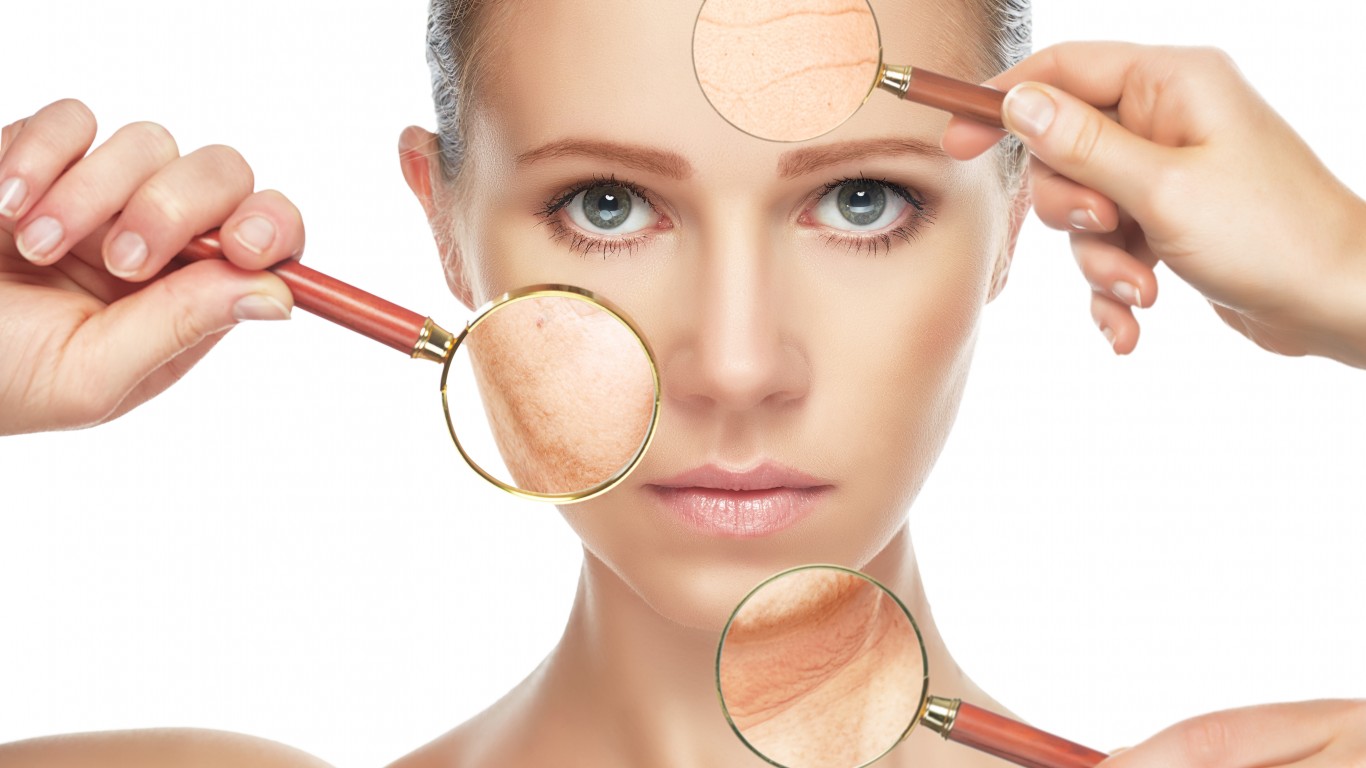
Americans spend billions of dollars on skin-care products each year in the hopes these products will help keep their skin looking young and healthy. The skin-care market has been growing steadily for years, and global sales are projected to reach $183 billion by 2025, according to an analysis by Report Buyer, a marketing research company.
Some products, in addition to a healthy lifestyle, may help delay some of the inevitable changes in the skin’s appearance such as the dreaded wrinkles. These fine lines, along with other signs of aging like dryness and age spots, have one major common cause — sunlight.
There is no magic formula for looking younger than you really are. Sleeping well, eating healthy foods, and exercising are all important but may seem impossible in today’s busy environment. Unfortunately, how you treat your body may show on your skin — and these are 20 bad and common habits that are aging people really fast.
To identify 15 major changes the skin undergoes as it ages, 24/7 Tempo reviewed several clinical studies and research published in the International Dermal Institute and various journals such as Aging Cell.
Click here to see what happens to your skin as you age.
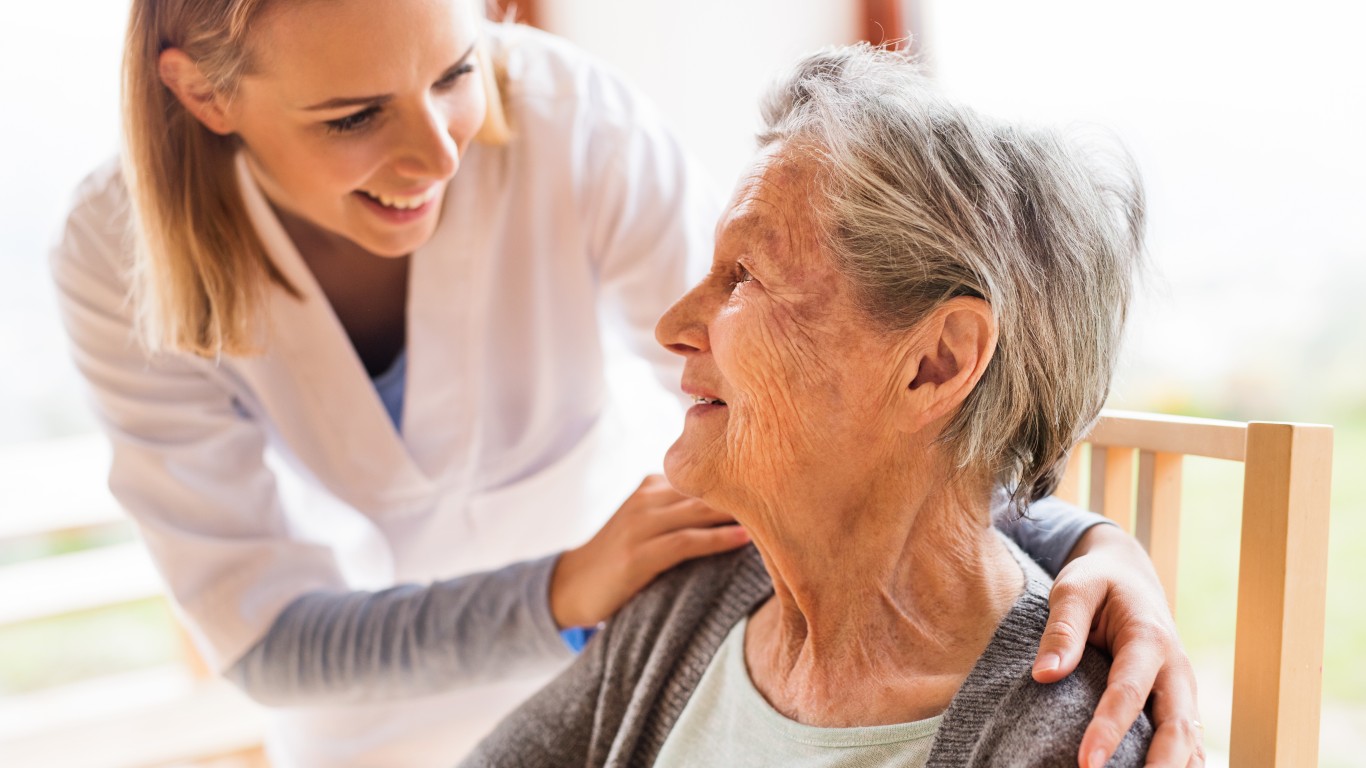
1. It loses elasticity
As people get older, the dermis, which is the thicker and deeper layer of the skin, can lose from 20% to 80% of its thickness due to changes in the cells responsible for collagen and elastin biosynthesis. These proteins are produced at a slower rate, affecting the skin’s structure, causing it to hang loosely and become slack. Changes in elastin fibers are typical in elderly people, sometimes leading to a condition called elastosis. In solar elastosis, caused by sun damage, the skin looks yellow and can develop bumps.
[in-text-ad]

2. It takes longer to heal
Eccrine sweat glands, which secrete sweat to the skin surface to help cool a person’s body temperature, also help heal wounds. They are, in fact, a source of new cells that replace the ones lost to injury. However, this process does not work as well in older adults as it does in younger people, according to research published in Aging Cell. There are fewer new cells available to heal wounds, and they are located farther apart, resulting in a delayed healing process. The reason is not that the glands were less active, but that the degraded aging skin was less able to support the new cells.
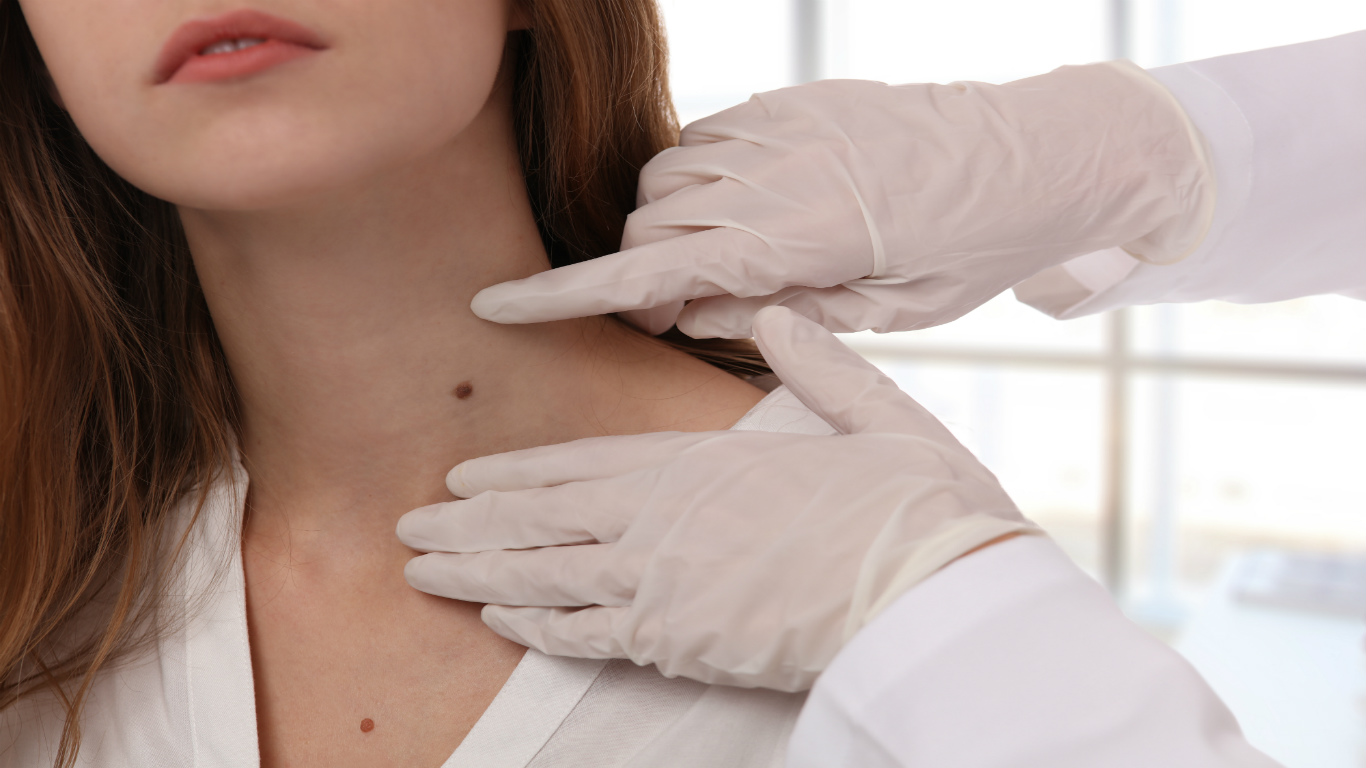
3. It develops benign tumors
A benign tumor is a non-malignant growth of cells, which means it does not spread. Benign tumors have been linked to ultraviolet radiation coming from the sun. Skin tags and moles are examples of benign tumors, and aging skin is more prone to developing them. Medically, they are benign proliferation of melanocytes, which are the cells that produce the protective skin-darkening pigment melanin.
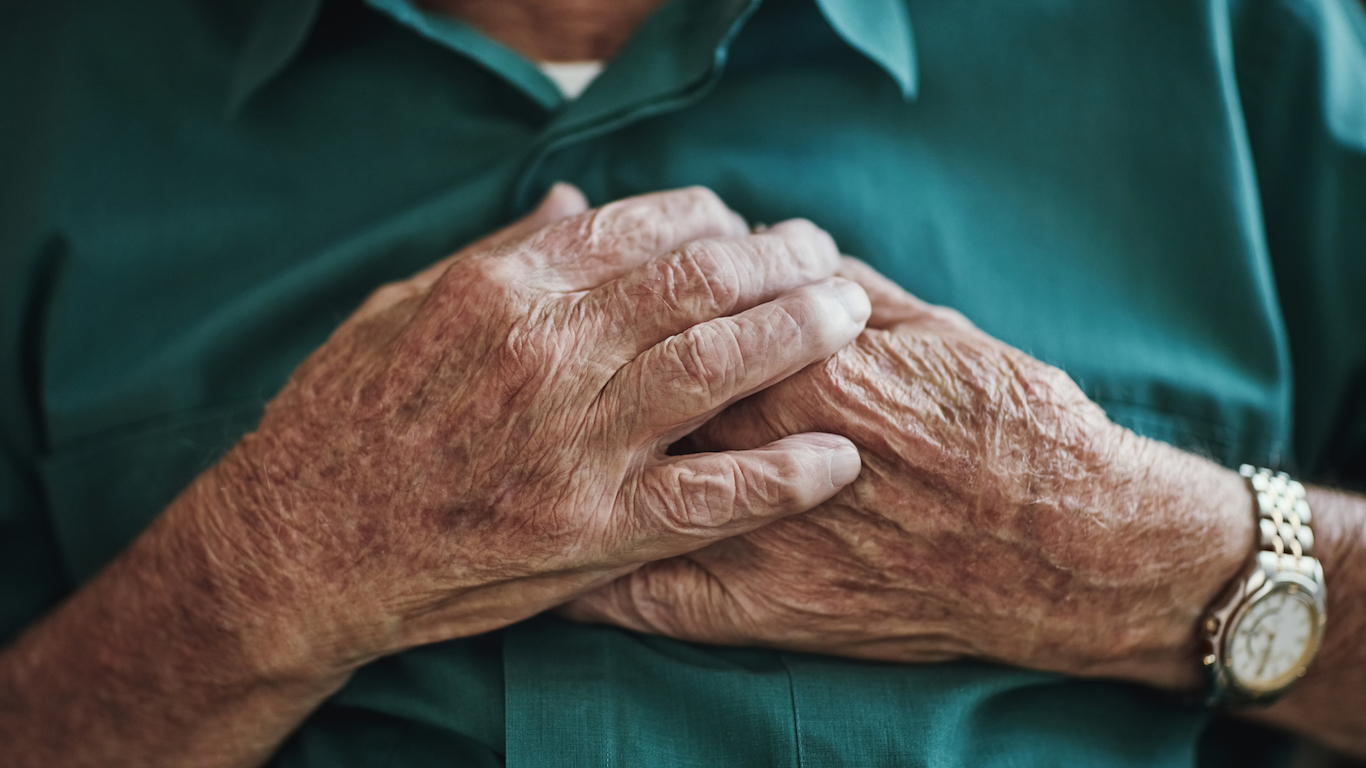
4. It becomes transparent
It is not uncommon for the skin to become more transparent in elderly people, especially in those with rheumatoid disease. Veins on the hands, wrists, ribs, and shins of elderly people can be seen through the skin. Clinical studies of biopsies found that collagen fibers, which are what keep the skin firm and looking young, are not as closely packed in transparent skin as they are in more opaque skin.
[in-text-ad-2]
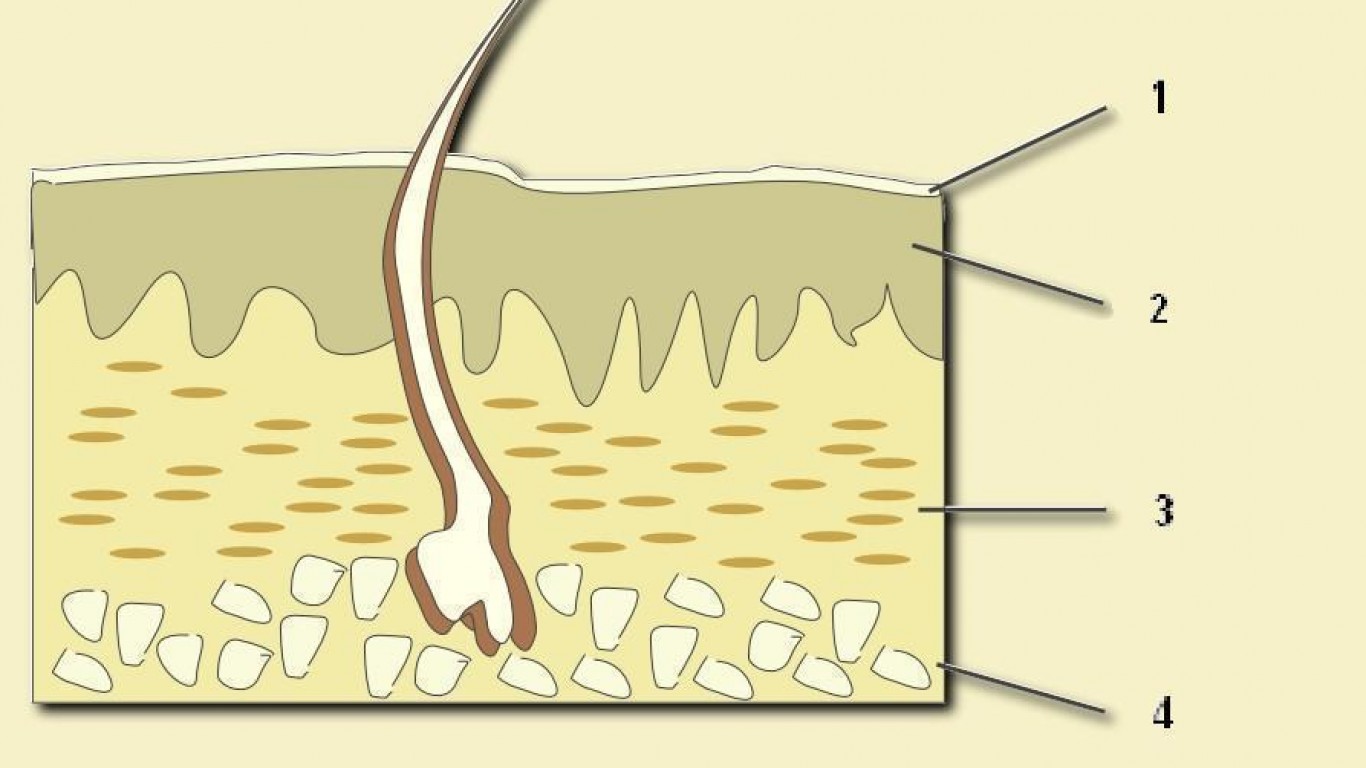
5. It loses a protective layer of fat
The subcutaneous layer, or the inner layer of the dermis, is where the sweat glands, some hair follicles, blood vessels, and fat are found in the skin. As we age, this protective layer of fat thins, providing less insulation to the skin, and making it more fragile and susceptible to injury. Older people may therefore be more sensitive to cold, heat, and touch.
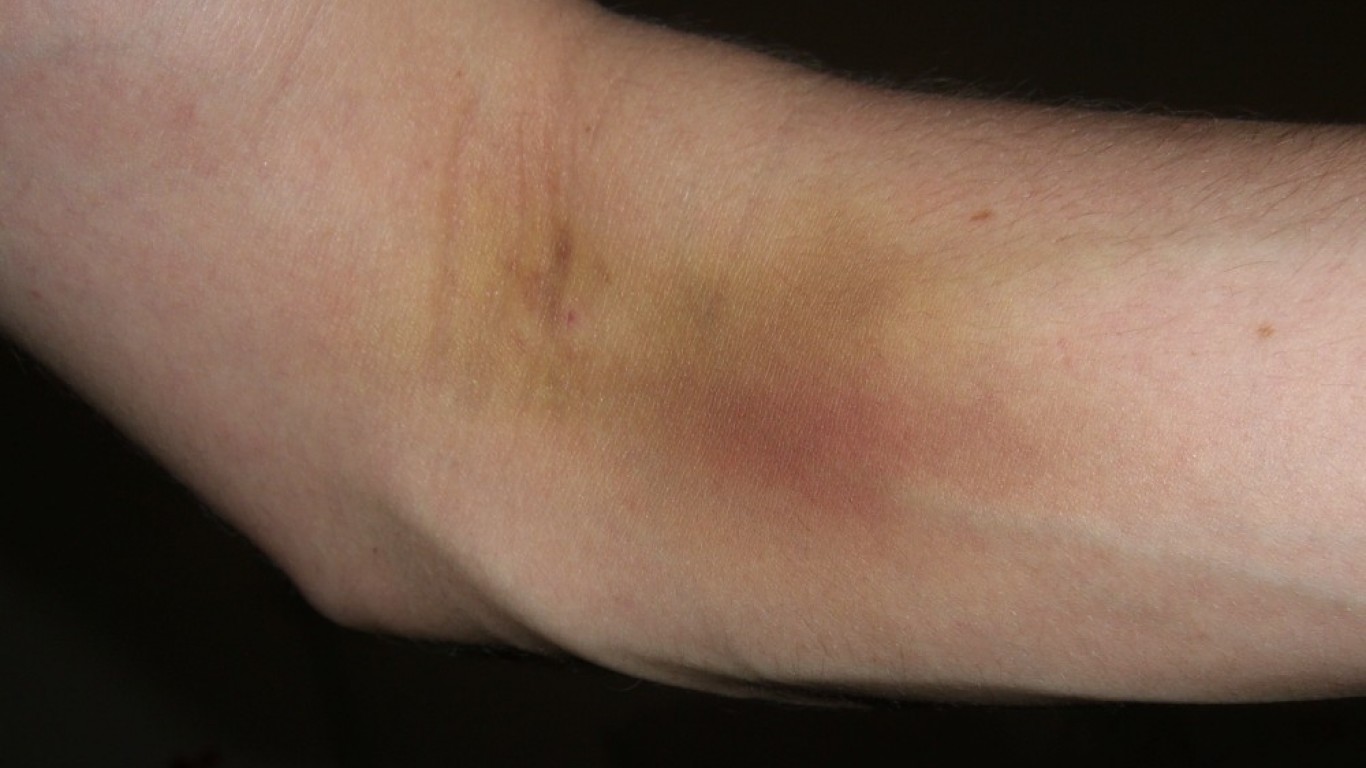
6. It bruises easily
Bruising is common in older adults because the skin is thinner. Due to the loss of some of the fat that protects the blood vessels from injuries, blood vessels can break more easily with blood leaking out, forming a bruise.
[in-text-ad]
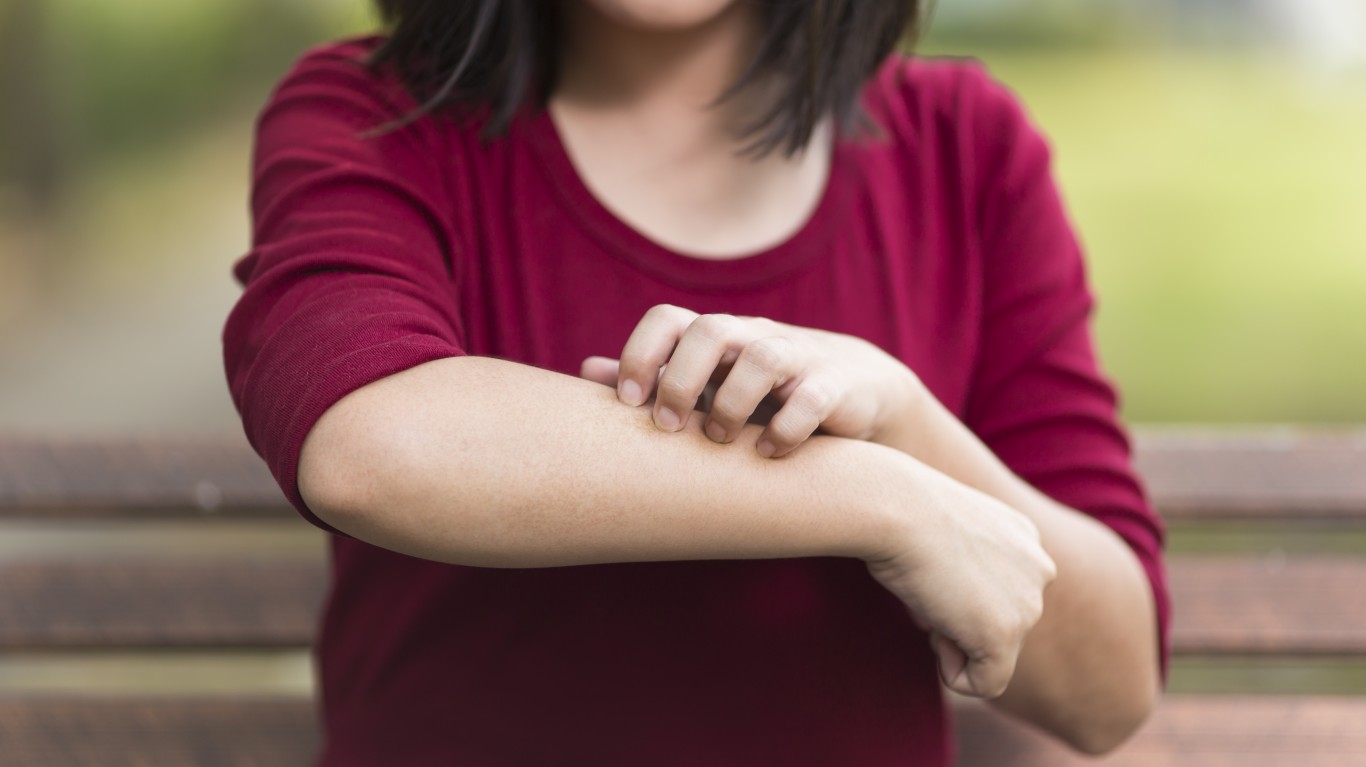
7. It becomes rough, dry, and itchy
Sebaceous glands, which are responsible for lubricating the skin, produce less oil with age. This is visible mostly in older women, whose glands gradually start making less oil after menopause. The lower levels of sebum, the oily matter secreted by the gland, means lower levels of moisture in the skin, which can cause dryness and itchiness.
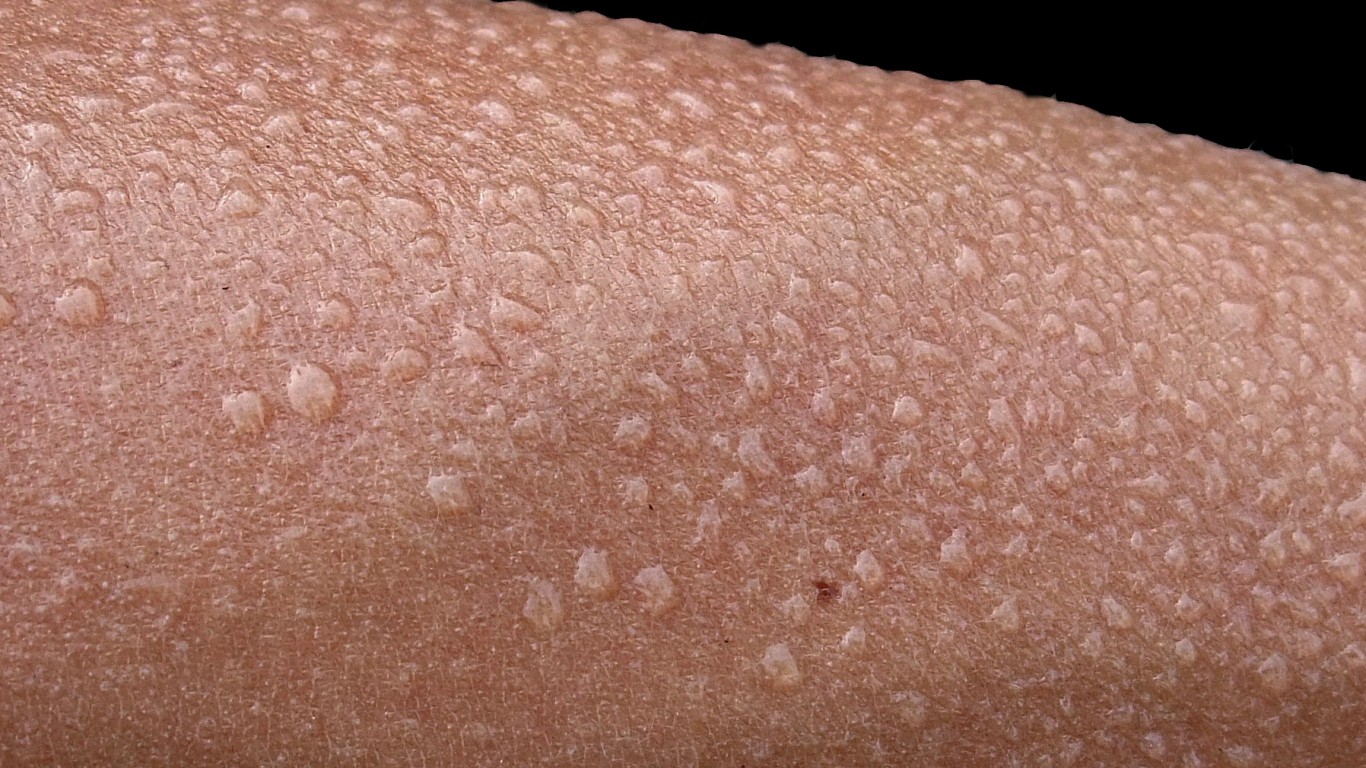
8. It retains more heat
Older people sweat less than younger adults because sweat glands become less efficient over time, producing less sweat, which makes controlling body temperature more difficult. The risk of overheating and heat strokes increases with age.
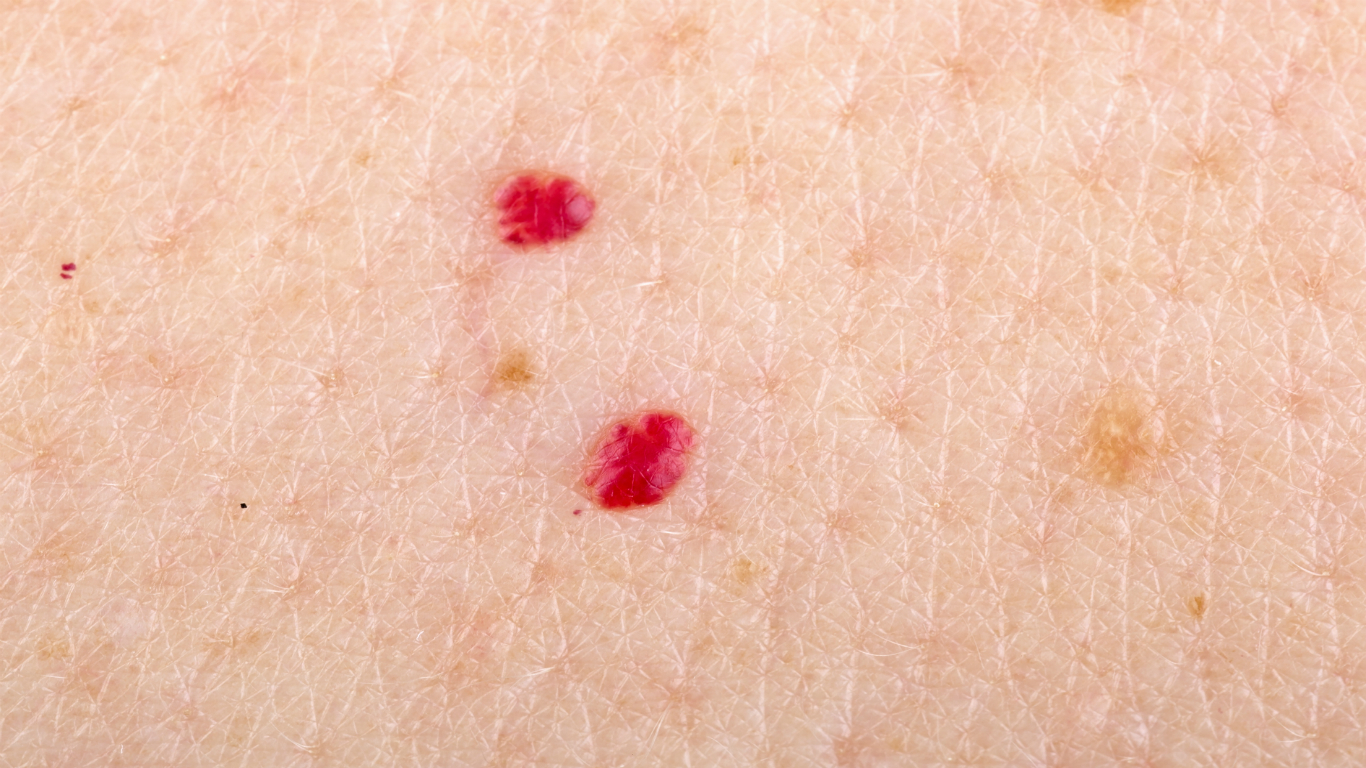
9. It grows cherry bumps
Cherry bumps, also known as cherry angiomas, look like red moles. They are the result of an overgrowth of capillaries. Most common among people older than 30, they are basically dilated blood vessels that often show up on the chest, stomach, or back. Why exactly they develop is not clear, but they are not a cause of concern, unless they bleed often or change color or size.
[in-text-ad-2]
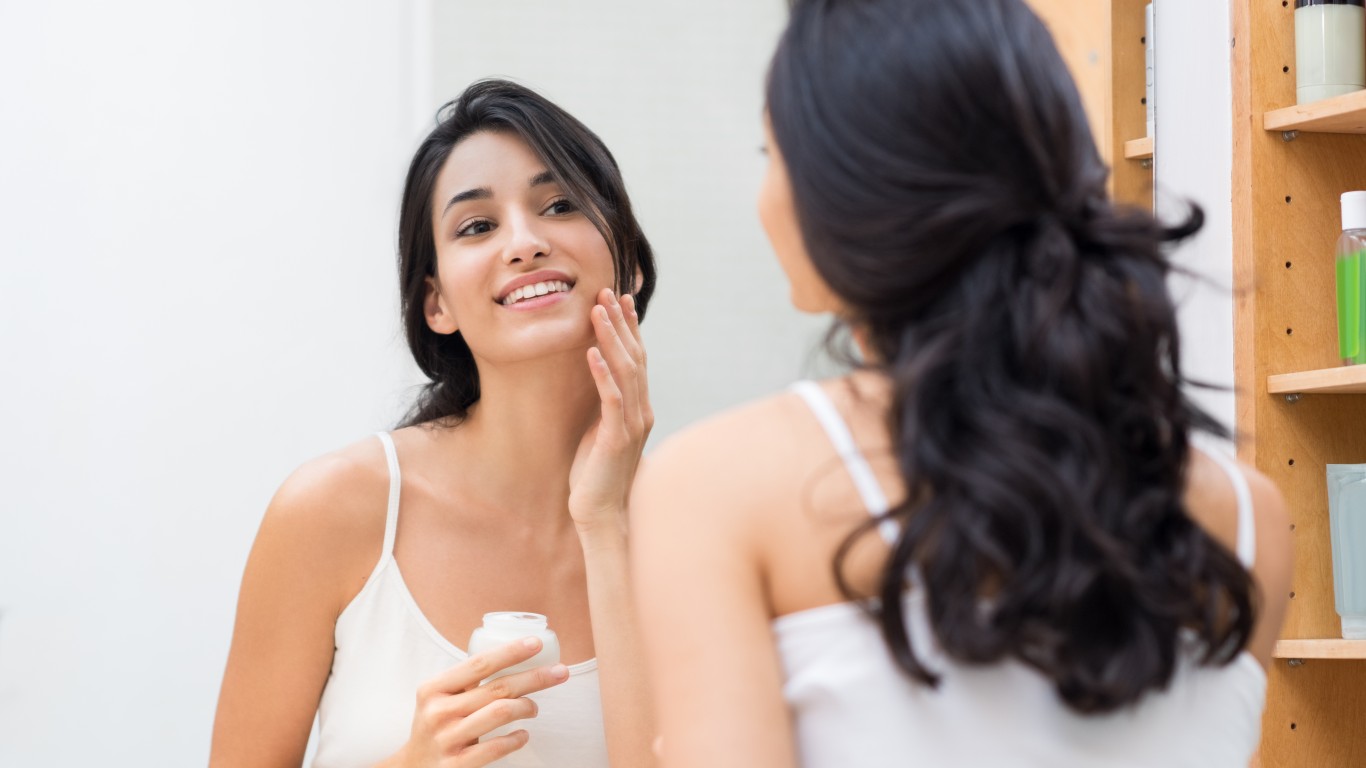
10. It becomes less responsive to some meds
The innermost layer of the skin consists of fat and connective tissue. Because it contains many blood vessels and nerves, it easily absorbs medications. Some medications, such as those for acne and dermatitis, are absorbed by the fat layer that the skin thins out as people age. Hence, the meds are less effective.
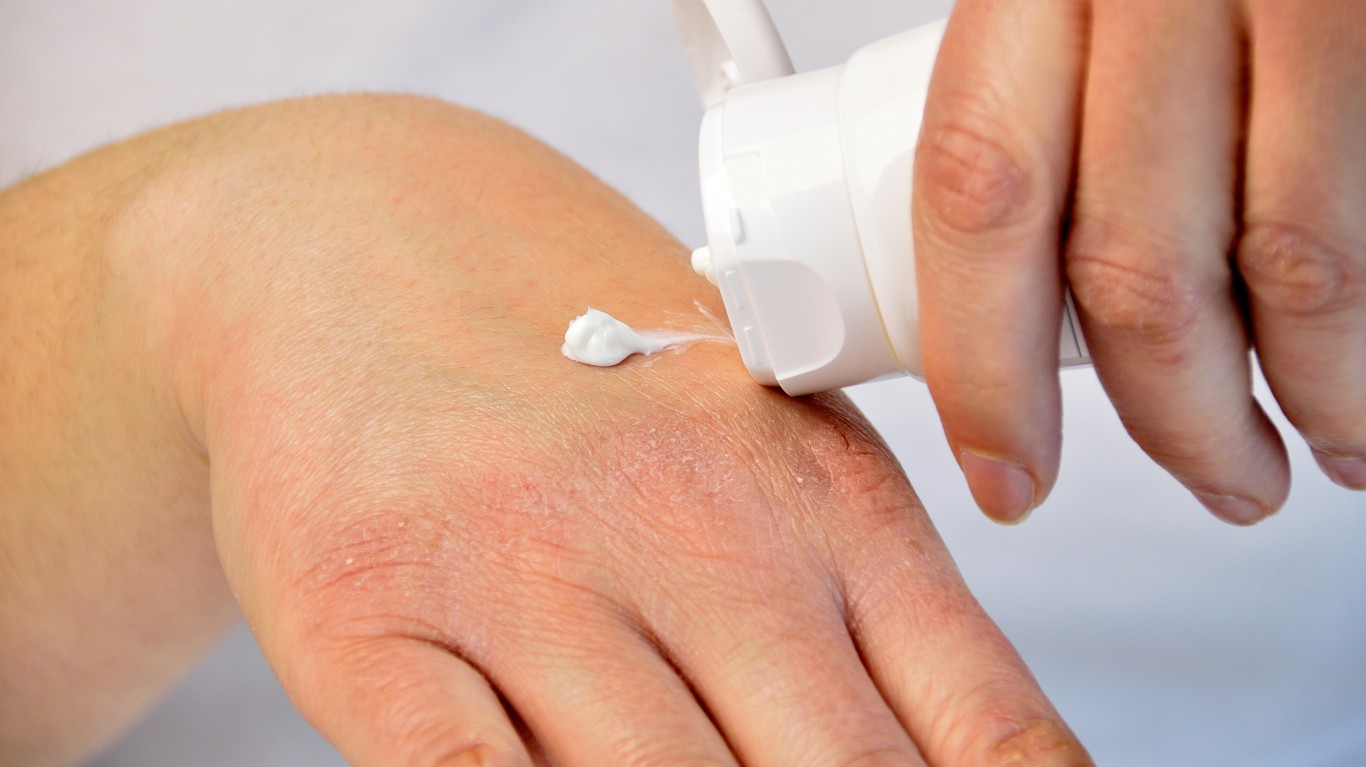
11. It can become very dry
Xerosis is the medical term for dry skin, which is common especially among older people. As the skin ages it loses water and oils, making it more difficult to retain moisture. The skin gets dry and appears rough and hardened.
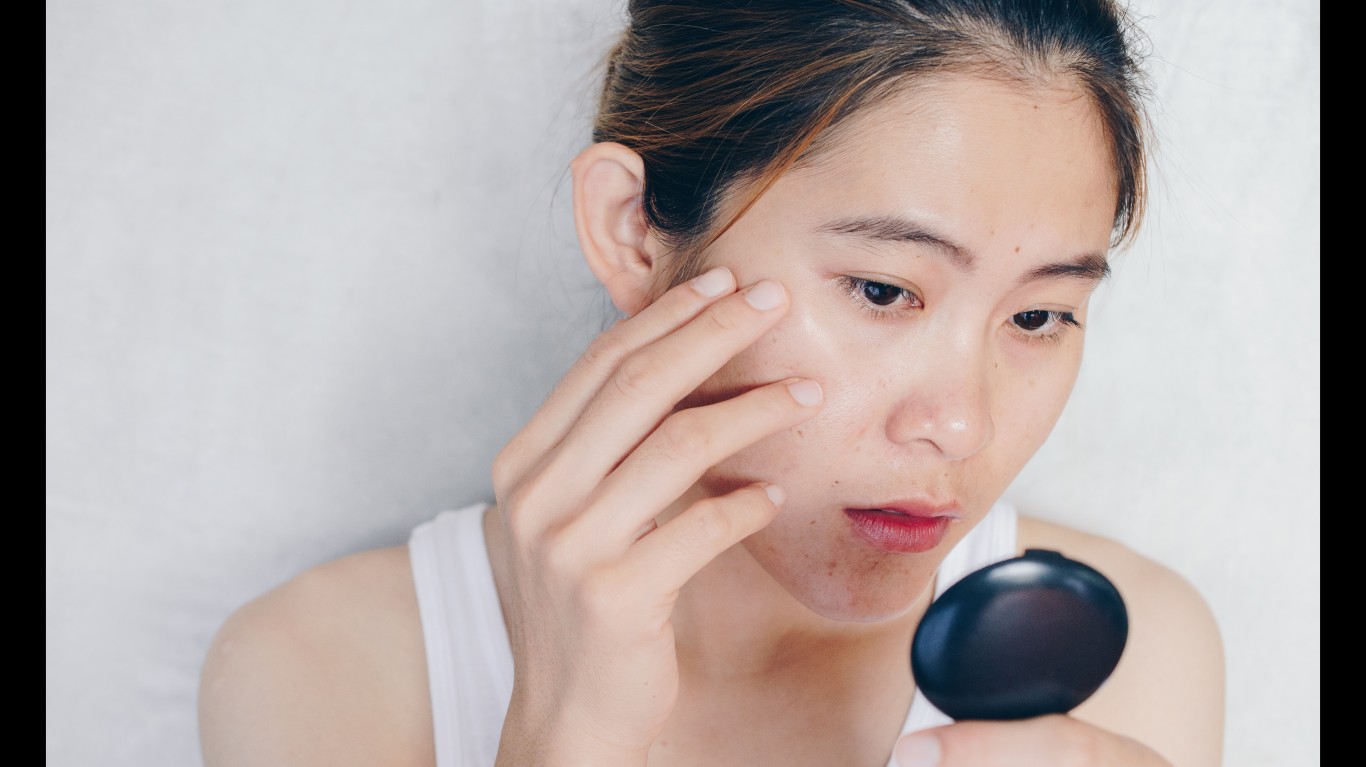
12. Epidermis becomes thinner
Age does not lower the number of skin cell layers, but it affects their strength. As people get older, the skin becomes thinner gradually – at an average rate of about 6.4% per decade, according to research. The epidermis, the outer layer of the skin, decreases in thickness, particularly in the face, neck, upper part of the chest and hands, and the back of forearms.
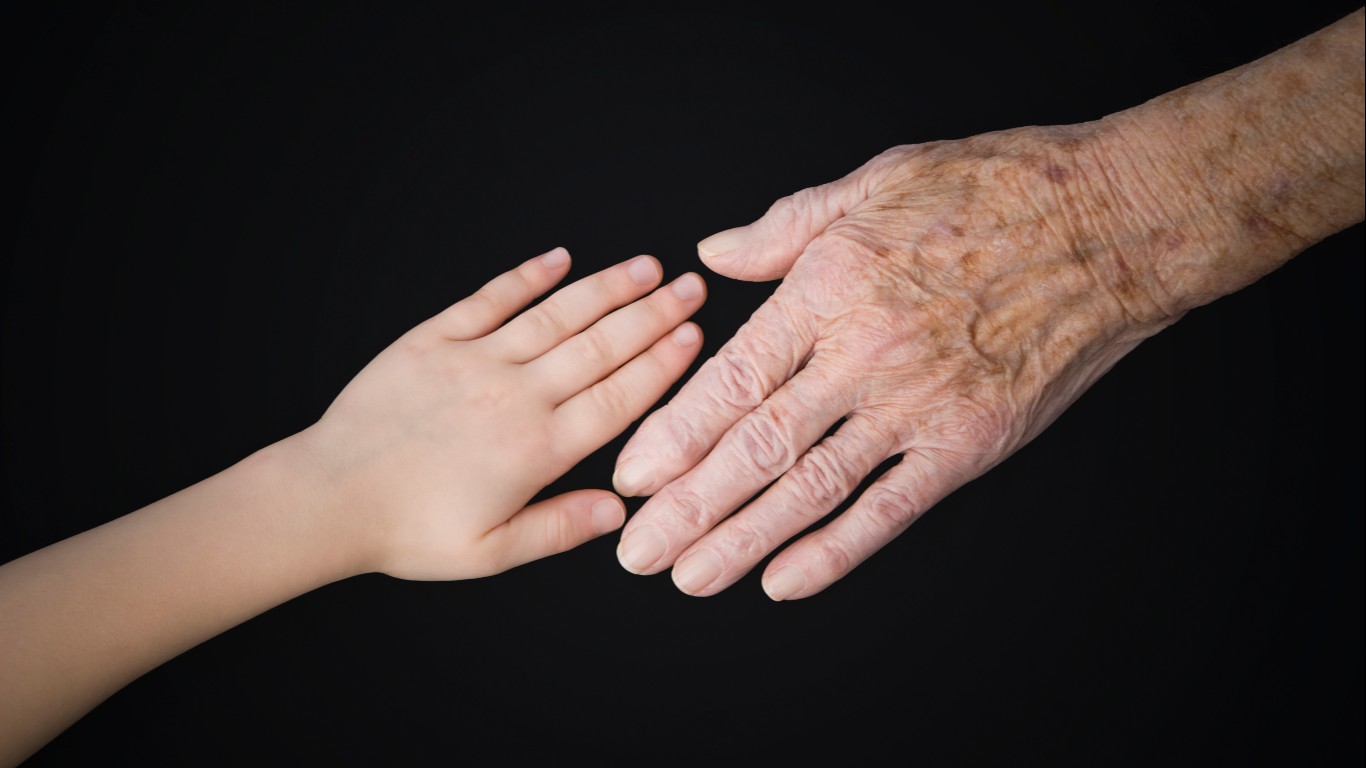
13. Age spots appear
Age spots – small, dark brown areas on the skin that, unlike freckles, don’t fade — can technically appear on all skin types but are more common in older people with light skin. The most common parts of the body where they appear are in parts exposed to the sun, such as shoulders, hands, face, and arms. Age spots are not a health problem, unless they change in appearance, which may be a sign of skin cancer.
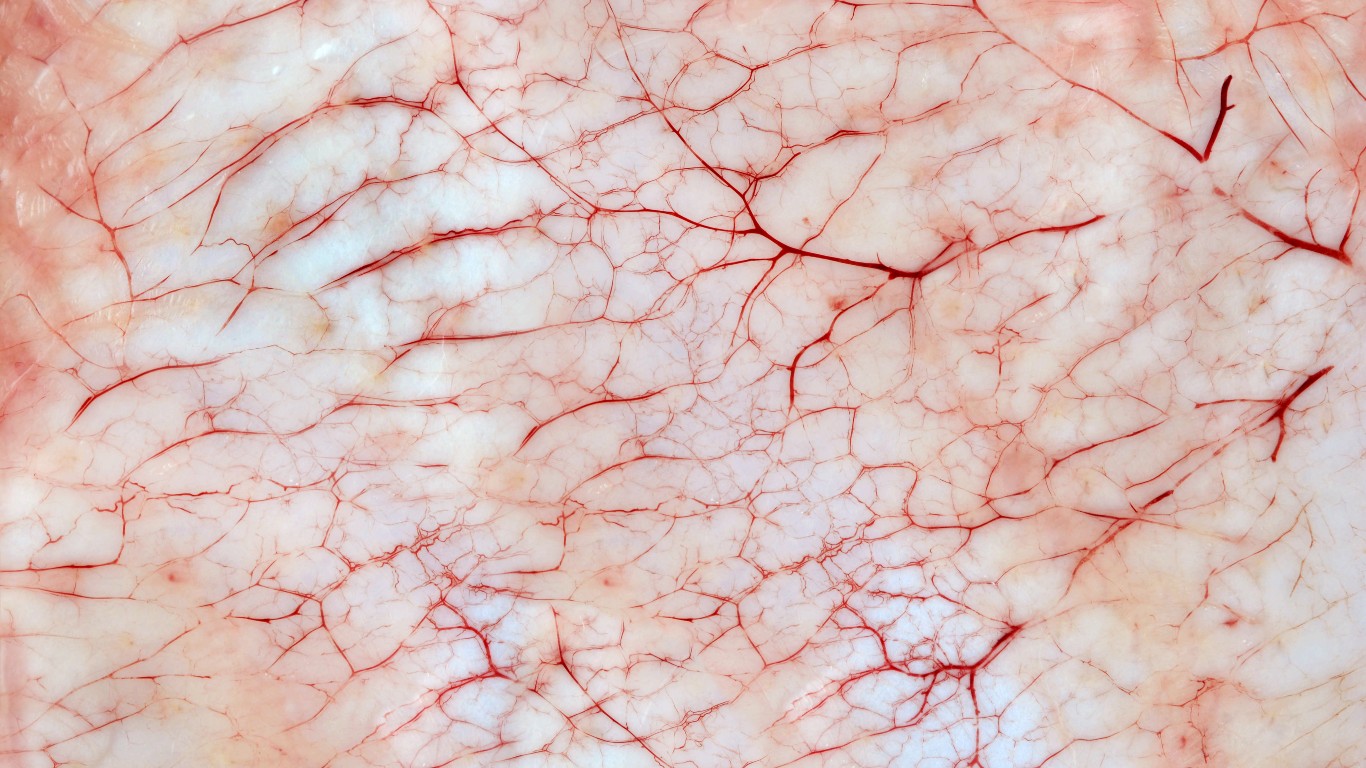
14. Blood vessels become fragile
Blood vessels lose elasticity with age, which makes them more susceptible to breaking. Common conditions associated with fragile blood vessels of the dermis are bruising, bleeding under the skin, and cherry angiomas (red moles on the skin). The most common parts of the body where bruising can occur as a result of this are the back of the arms and legs.
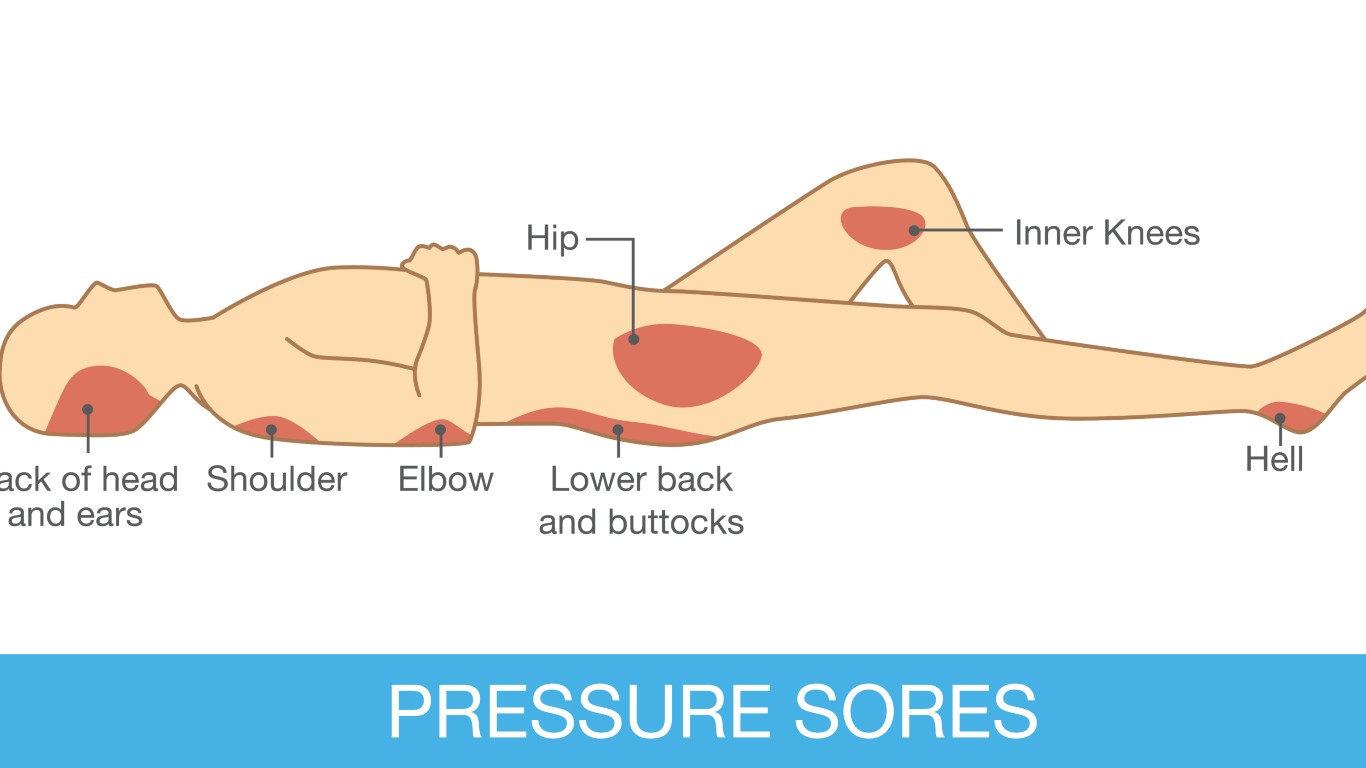
15. Pressure ulcers
Pressure ulcers are often referred to as bed sores, implying that only people who are bed bound develop them. While reduced mobility is a major risk factor for pressure ulcers, people who are able to walk can also get pressure ulcers. Skin changes, including the loss of fat layers in the dermis, can cause pressure ulcers, according to the National Institutes of Health. The skin’s slower healing process as a result of aging can contribute to sores and other skin infections as well.
Get Ready To Retire (Sponsored)
Start by taking a quick retirement quiz from SmartAsset that will match you with up to 3 financial advisors that serve your area and beyond in 5 minutes, or less.
Each advisor has been vetted by SmartAsset and is held to a fiduciary standard to act in your best interests.
Here’s how it works:
1. Answer SmartAsset advisor match quiz
2. Review your pre-screened matches at your leisure. Check out the advisors’ profiles.
3. Speak with advisors at no cost to you. Have an introductory call on the phone or introduction in person and choose whom to work with in the future
Thank you for reading! Have some feedback for us?
Contact the 24/7 Wall St. editorial team.
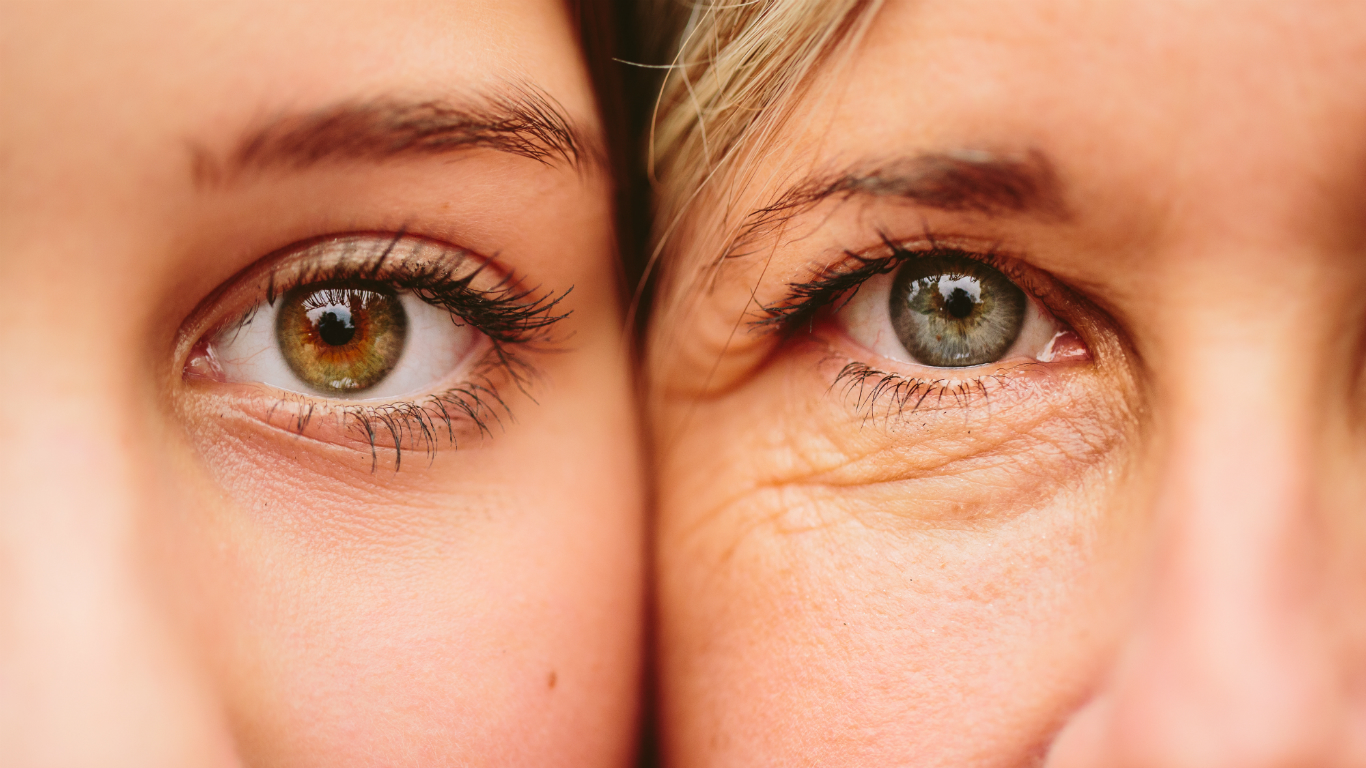 24/7 Wall St.
24/7 Wall St.


